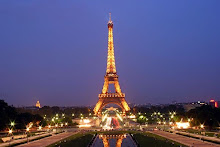The last color is fading from the day and I sit here barely able to see my keyboard for the tears that have occluded my vision. In my inner being, in places I did not know I had, I wail. My throat is constricted with the intense heat of grief. I feel like I have just had major surgery without the merciful benefit of anesthesia. I am stunned at how a tsunami of emotion can simply erupt out of the seemingly quiet waters of a sunny cerulean Sunday afternoon in a bucolic paradise. I can’t but wonder where the epicenter of the shockwave is that blasted into the sea of my life. I can’t but wonder how many other fault lines run through my being, only awaiting the unexpected time when two tectonic plates will slip sideways, turning me upside down.
I am thirty-two days into what has been essentially an intense pilgrimage and I don’t recommend it for the faint of heart, and I am definitely that at present. I worry that I might not find all the pieces and get them back together. It is a very difficult thing to do a pilgrimage very far from home - there being those days when one feels like one’s soul has become nothing but potsherds of clay in the dustbin of antiquity. I have just dropped my pot, inadvertently slipping on a patch of time.
In this beautiful land, on the 4th of May each year, several generations take time from their bountiful lives to remember a time when the brilliant sunshine of liberation shattered the hideous ebony darkness of totalitarian occupation. And so it was that after a magnificent dinner on the terrace, Hans, Yne, and I mounted our bicycles and joined a somber procession of other cyclists and pedestrians and made our way in the last golden light of a magnificent day to an emerald oasis studded with magnificent rhododendron, azalea, and a dozen species of spring perennials to remember the sacrifice and extreme cost of liberation. It was fifty-eight years ago that uncounted tens of thousands of British, Canadian, and American boys and young men paid the ultimate price to give back to the Dutch people their beloved land and cities, and especially the possibility of peace and freedom from years of unceasing terror. Over a period of some nine months the miracle of liberation spread north and east across the Netherlands. The epic film “A Bridge Too Far” portrays the fierce price paid for this miracle of liberation and just how close it came to being lost.
In this emerald oasis, with ultimate reverence, I walked down aisles of white marble testaments of the young men who forever left behind dearly loved wives, children, and parents. Slowly and gently as possible, I walked across the green turf, feeling a shearing pain and grief tear across the inside of my soul. I found myself wailing for the lives that never got lived, the children that never knew their daddies, the wives that never again felt the loving arms of their husbands. It is hard to imagine a more sacred or civilized place than this war cemetery that marks the lives of the six hundred sixty-five donors of freedom who a mere six years before my birth liberated this beautiful village from the jackboot of the Third Reich. Hans and Yne both lived in the darkness of that slippery time on which I just fell. Yne describes being sent to the country as a child because the Dutch cities were starved out by the Nazi monsters. They know what it is like to come home from school and cry at the door for fifteen minutes to be let in – only to learn the Nazi machine had taken their parents further into the darkness of a man-made hell. Hans grandfather was shot. Hans father wore a yellow star. His mother lived in stark terror for uncounted years. Hans and his father both faced the possibility of extinction every day.
I joined that procession expecting to be little more than an observer. Once again, I was jerked by a short chain into another role. I was no longer the journalist, the traveler, instead a rather grief-stricken pilgrim, a mourner of lives truncated by the great darkness that swept the world. Suddenly, there were names and faces, dear to me, emerging from the odious shadows of hell. I was no longer a historian, rather a participant stumbling on Ida Fink’s A Scrap in Time.
It being far more important to remember in our hearts and souls than on paper, the true cost of freedom, it seemed decidedly crass to even think of taking a camera to this assembly of memory. Forever I will remember the spectral brilliance of those spring perennials bursting forth with color in the last rays of the aureate sun, embracing the bases of those marble testaments of short lives lived well, that we might live well and long, in freedom.
As long as there are those that remember, there is hope. As long as there are mayors who back slowly away from floral displays on white marble and bow imperceptibly, there is hope. As long as there are grandparents who bring grandchildren to remember, then perhaps we might not forget to put things where they belong, to take care of other people and their things as if they were our own. Perhaps one day we really can beat swords into plowshares.
We are promised in the Revelation that one day we will enter into a place where there are tears no more. I only can hope that those six-hundred sixty-five souls marked in stone will one day know the brilliance of eternal day. For today, my tears will water the flowers of remembrance.
How much this world desperately needs the gentle rains of life-giving love.
Subscribe to:
Post Comments (Atom)

No comments:
Post a Comment